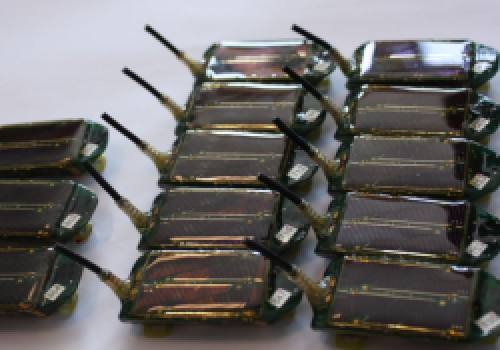You are here
Tagging and tracking
As part of the biodiversity observatories, LifeWatch operates several sensor networks for observation of tagged animals. As the networks are operational and being used by several tagging projects, the number of tagged species observations grows continuously. The given number is a calculation based on both the GPS tracking network for large birds and the fish acoustic receiver network.
Birds
Within the LifeWatch.be GPS tracking network for large birds, 3 bird species are being tagged:
- European Herring Gull (Larus argentatus Pontoppidan, 1736)
- Lesser Black-backed Gull (Larus fuscus Linnaeus, 1758)
- Western Marsh Harrier (Circus aeruginosus Linnaeus, 1758)
The birds are tagged with lightweight, solar powered GPS trackers that periodically record the 3D position, air temperature and body movements. The data are stored on the tracker, until these can be transmitted automatically and wireless to a base station using the built-in ZigBee transceiver with whip antenna. The spatial range for this communication is restricted to the location of the base station (or antenna network), which is placed near the colony. Data cannot be retrieved from birds that do not return to the colony with the base station.
Fish
Within the Fish Acoustic Receiver Network, different marine, fresh water and amphidromous fish species are being tagged:
- Atlantic cod (Gadus morhua Linnaeus, 1758)
- Atlantic salmon (Salmo salar Linnaeus, 1758)
- Chub (Squalius cephalus Linnaeus, 1758)
- Common carp (Cyprinus carpio Linnaeus, 1758)
- Common dab (Limanda limanda Linnaeus, 1758)
- European eel (Anguilla anguilla Linnaeus, 1758)
- European flounder (Platichthys flesus Linnaeus, 1758)
- European plaice (Pleuronectes platessa Linnaeus, 1758)
- European seabass (Dicentrarchus labrax Linnaeus, 1758)
- Lemon sole (Microstomus kitt Walbaum, 1792)
- River lamprey (Lampetra fluviatilis Linnaeus, 1758)
- Sea lamprey (Petromyzon marinus Linnaeus, 1758)
- Starry smooth-hound (Mustelus asterias Cloquet, 1819)
- Twaite shad (Alosa fallax Lacepède, 1803)
- Wels catfish (Silurus glanis Linnaeus, 1758)
Fish are tagged with acoustic transmitters. This type of transmitters sends out an acoustic signal (pulse train) at a specific frequency on a predefined time delay. The acoustic receivers, installed at many locations in the Belgian Part of the North Sea, the Western Scheldt and several rivers in Belgium, listen to this frequency and recognize the unique ID-codes. Information is stored on the receiver with a time-stamp.
Currently only acoustic tags are used for fish in the LifeWatch Observatory. In the near future, other telemetry techniques will be included.


